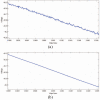FPGA-Based Pulse Parameter Discovery for Positron Emission Tomography
- PMID: 20607103
- PMCID: PMC2895941
- DOI: 10.1109/NSSMIC.2009.5401602
FPGA-Based Pulse Parameter Discovery for Positron Emission Tomography
Abstract
Modern Field Programmable Gate Arrays (FPGAs) are capable of performing complex digital signal processing algorithms with clock rates well above 100MHz. This, combined with FPGA's low expense and ease of use make them an ideal technology for a data acquisition system for a positron emission tomography (PET) scanner. The University of Washington is producing a series of high-resolution, small-animal PET scanners that utilize FPGAs as the core of the front-end electronics. For these next generation scanners, functions that are typically performed in dedicated circuits, or offline, are being migrated to the FPGA. This will not only simplify the electronics, but the features of modern FPGAs can be utilizes to add significant signal processing power to produce higher resolution images. In this paper we report how we utilize the reconfigurable property of an FPGA to self-calibrate itself to determine pulse parameters necessary for some of the pulse processing steps. Specifically, we show how the FPGA can generate a reference pulse based on actual pulse data instead of a model. We also report how other properties of the photodetector pulse (baseline, pulse length, average pulse energy and event triggers) can be determined automatically by the FPGA.
Figures









References
-
- Lewellen TK, Janes M, Miyaoka RS, Gillespie SB, Park B, Lee KS, Kinahan P. System integration of the MiCES small animal PET scanner. IEEE Nuclear Science Symp. Conf. Record. 2004:3316–3320.
-
- Guerra P, et al. Digital timing in positron emission tomography. IEEE Nuclear Science Symp. Conf. Record. 2006:1929–1932.
Grants and funding
LinkOut - more resources
Full Text Sources
